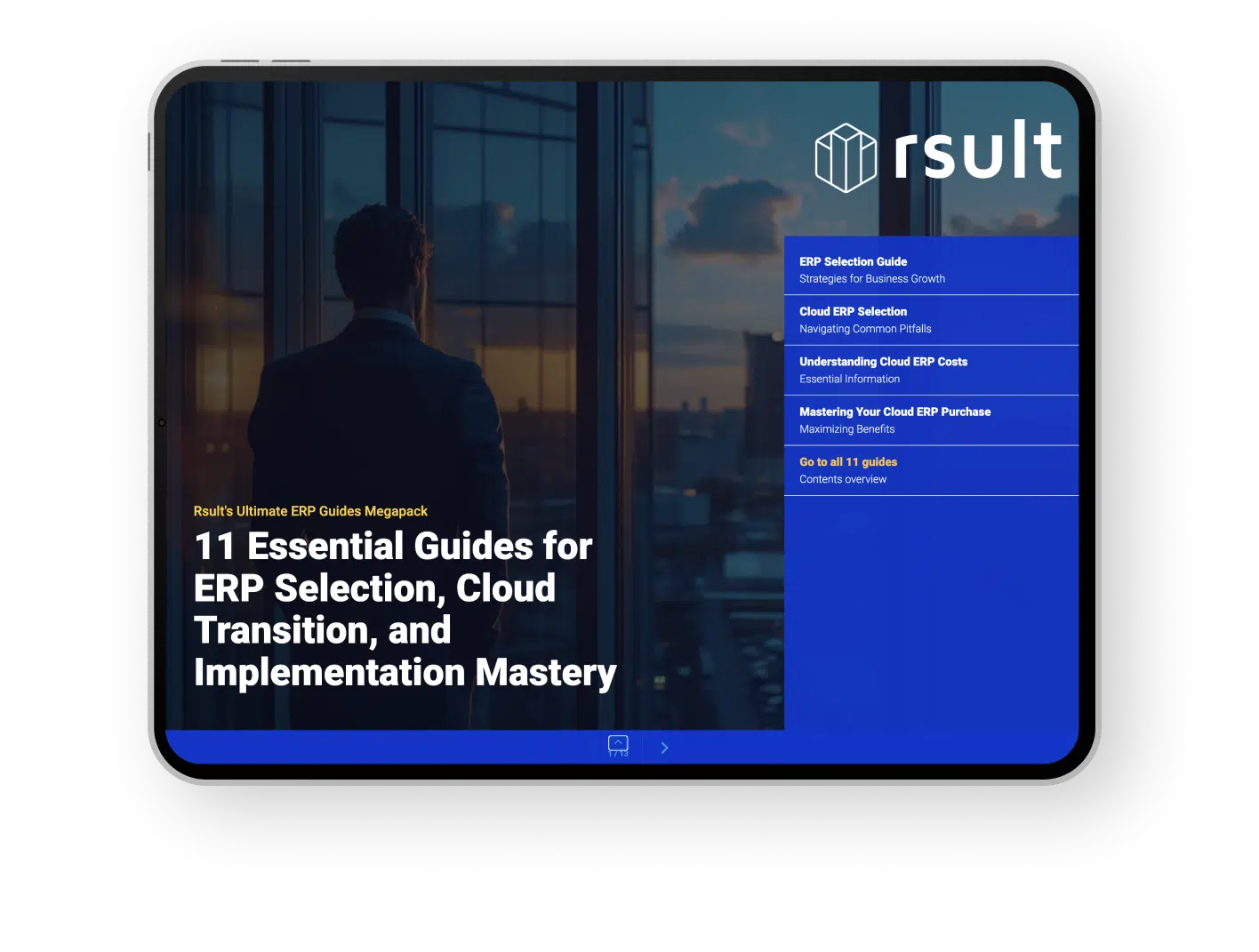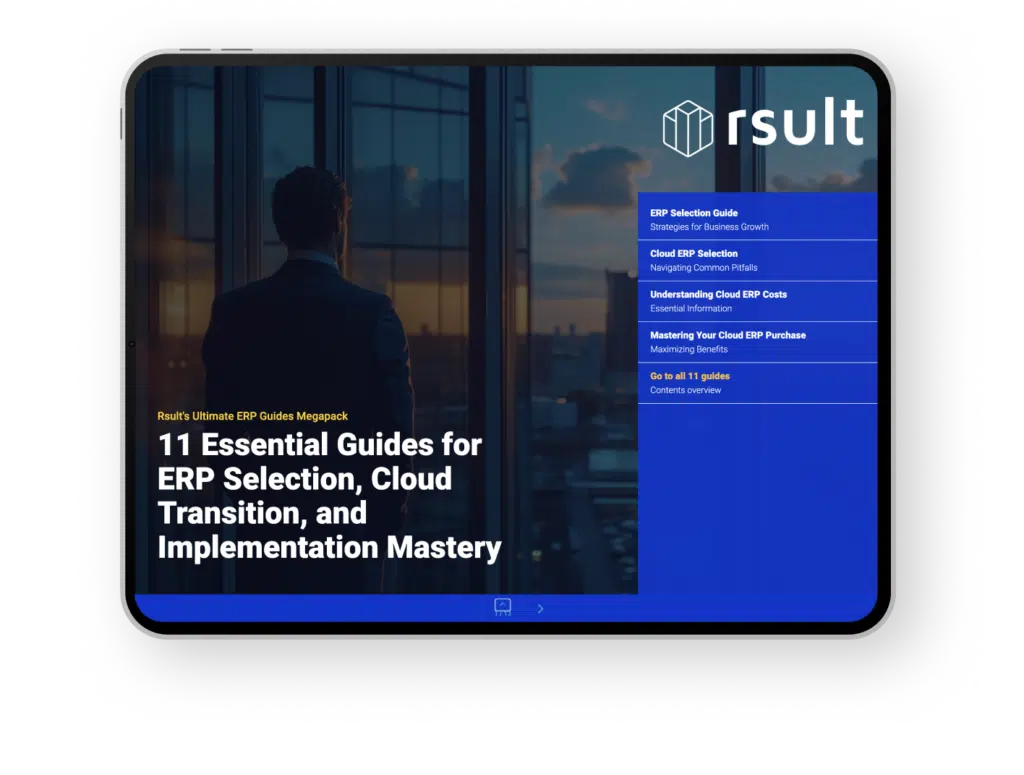In today’s competitive market, architectural firms must leverage the right tools and systems to improve operational efficiency, boost profitability, and maintain a top-tier service level. A crucial resource für achieving these goals is an ERP software for architects, engineered to keep projects organized, manage costs effectively, and bring myriad benefits to the business. Essential for integrating project management, accounting, and strategic planning on a unified platform, architects need to choose an ERP solution that offers seamless integration with payroll and HR systems, mobility with complete app functionality, and modules that cater to time tracking, billing, CRM, and human resources. A well-implemented ERP system can revitalize the way architects handle their projects, offering a tailored approach to project management encompassing Work Breakdown Structure (WBS), Cost Breakdown Structure (CBS), budgeting, forecasting, document management, human resources, and ERP accounting, procurement, sales, and marketing.
Key Takeaways
- ERP software for architects is essential for optimizing project management, accounting, and strategic planning within a firm.
- Customizable ERP solutions allow architects to adapt the system to meet their unique operational needs and workflows.
- Advanced project management tools, integrated accounting modules, and powerful reporting capabilities are vital characteristics of high-quality architectural ERP software.
- Cloud-based ERP solutions offer the advantages of accessibility, scalability, and ease of maintenance, while on-premise ERP systems provide greater customization and control.
- Architectural firms should assess their specific needs, scalability, and integration requirements when choosing the right ERP solution.
Understanding ERP Software and its Utility for Architects
Enterprise Resource Planning (ERP) software for architects serves as an integrated platform that streamlines various business operations, standardizes diverse business functions, and automates complicated tasks. It presents a single source of truth across the organization, fostering smooth collaboration and real-time data access for accurate reporting and analytics.
Architecture firms benefit from centralized control over document management, financial management, complex projects, production planning, and resource management with ERP systems. They can choose between cloud-based ERP software or on-premise systems depending on factors like customization needs, accessibility, budget constraints, and the required control levels.
When evaluating architecture accounting software, it’s crucial to consider its ability to integrate with payroll and HR systems, as well as offering modules catering to time tracking, billing, CRM, and human resources. This ensures that the top ERP software for architects can comprehensively fulfill the organization’s requirements.
- Centralized Data: ERP systems organize and consolidate all data into a single platform, eliminating data silos and facilitating seamless communication across departments in an architecture firm.
- Project Management: By incorporating advanced project management tools, ERP systems help architects manage the entire project lifecycle, from concept to completion, with improved efficiency and timeliness.
- Resource Management: Architects can easily allocate resources, manage schedules, and control costs with the help of ERP software, contributing to reduced project overruns and increased profitability.
- Document Management: ERP systems centralize project documentation, ensuring easy storage, retrieval, and version control for all essential files and records.
- Financial Management: With a robust accounting module, ERP systems offer real-time financial data, accurate budgeting, forecasting, and analytics, which are crucial for informed decision-making and maintaining fiscal stability.
Implementing an ERP system for architecture firms can fundamentally transform the way they manage various business processes by providing a tailored approach to project management, cost control, and resource allocation. The right ERP solution will allow architecture firms to improve their overall efficiency, streamline workflows, and ultimately achieve better project outcomes.
The Importance of Customizable ERP Software for Architects
Customizable ERP software is essential for architects to cater to their unique operational needs effectively. It offers unmatched flexibility and scalability, making it possible for firms to adapt the system to their specific workflows and processes. This section delves into the importance of customization and its impact on architectural practices.
Flexibility to Match Firm-Specific Needs
Every architectural firm has its distinct processes and workflows, making it vital for their ERP software to be highly flexible and customizable. Customizable ERP software for architects allows firms to tailor the system according to their specific needs, ensuring seamless integration with existing tools and streamlining business operations. Consequently, firms can benefit from increased efficiency and productivity, addressing their unique challenges by finding the ideal balance between customization and standardization.
Scalability for Growing Architectural Practices
As architectural businesses expand and evolve, their ERP software must be capable of accommodating such growth without compromising performance or efficiency. Scalability is a pivotal feature of construction ERP software, allowing firms to add new modules and functionalities or modify existing ones with ease. This adaptability means that cloud-based ERP software can efficiently support the changing demands of growing architectural practices, providing a future-proof solution that helps firms stay agile and competitive in the market.
Key Features of Architectural ERP Software
Choosing the best ERP software for architectural firms requires considering specific features that contribute to the smooth running of the business. The ideal architectural ERP software will provide comprehensive project management tools, seamlessly integrated accounting modules, and advanced reporting with dashboard capabilities. Let’s dive into these key features in detail:
Project Management Tools
High-quality construction ERP software includes robust project management tools designed to help architects manage and coordinate projects more effectively. These tools streamline administrative tasks, facilitate communication among team members, and ensure seamless integration between various departments. From planning and design to execution and delivery, these project management features are essential for ensuring projects are completed on time and within budget constraints.
Integrated Accounting Modules
Architecture accounting software seamlessly integrated into the ERP system enables architectural firms to manage their financial operations cohesively. These powerful modules cover a wide range of accounting tasks, including general ledger management, accounts payable, accounts receivable, and budgeting. By consolidating financial data in one centralized location, architectural ERP software empowers firms to make well-informed financial decisions while remaining compliant with regulations and industry standards.
Advanced Reporting and Dashboard Capabilities
Architectural ERP software equipped with advanced reporting and dashboard capabilities offers real-time, actionable insights into project performance and financial health. With easy access to key performance indicators, architects can make data-driven decisions on resource allocation, risk mitigation, and project optimization. Tracking and analyzing data effectively becomes a seamless process with visual representations offered by interactive dashboards.
In summary, the best architectural ERP software must contain a range of key features to support the unique demands of architecture firms. These include robust project management tools, seamlessly integrated accounting modules, and advanced reporting with dashboard capabilities, all geared to ensure optimized decision-making for successful project outcomes.
Cloud-Based ERP Software Versus On-Premise Solutions
Architectural firms have the option of choosing between cloud-based ERP software and on-premise ERP solutions to streamline their business processes. Both types offer unique benefits, but their differences may impact the efficiency and effectiveness of the system in meeting individual firms’ needs. To determine which option is best, firms must consider factors such as accessibility, cost implications, and maintenance requirements.
Accessibility and Remote Working
Cloud-based ERP software provides increased accessibility and support for remote working, as it is hosted in the cloud and operates via an internet connection. This feature allows staff and project teams to access and update crucial data from anywhere, which enhances collaboration and real-time decision-making. Cloud-based erp solutions are particularly beneficial for architects and firms who require seamless communication while on construction sites or during client meetings.
Cost Implications and Maintenance Considerations
In terms of cost, cloud-based ERP software is often deemed more affordable due to its lower upfront implementation costs, subscription-based pricing, and minimal hardware requirements. Scalability and ease of maintenance are also significant benefits, as the software can be easily updated or expanded to meet the changing needs of a firm.
On the other hand, on-premise ERP solutions involve total ownership of the system, which affords greater control and customization capabilities. However, these advantages come at a higher cost due to the need for continuous investments in updates and system maintenance. Moreover, on-premise software does not inherently support remote working, which may pose challenges for architects who require real-time access to data while at construction sites or meetings.
In conclusion, while both cloud-based and on-premise ERP solutions have their merits, the decision ultimately depends on a firm’s individual needs and priorities. By carefully weighing the benefits and drawbacks of each system type, architects can select the most suitable ERP software to efficiently manage their projects and enable seamless collaboration among teams.
How ERP Solutions Optimize Architecture Project Delivery
ERP solutions play a pivotal role in optimizing project delivery for architecture firms by offering transparency and cohesion throughout the project lifecycle. This integration covers all aspects of planning, production, and finances, ultimately enhancing the firm’s efficiency. ERP systems reduce the reliance on redundant software and manual processes, which in turn allows firms to manage time better, reduce costs, and improve profitability.
One of the key advantages of utilizing architecture project management software, such as an ERP system, is the collective overview and data accuracy it provides. This enables informed decision-making and facilitates essential aspects of project management such as resource allocation, budgeting, and project tracking. As a result, architectural firms can enjoy seamless workflows and improved project outcomes.
When selecting an ERP system for architecture firms, it is crucial to consider the following benefits:
- Centralized management of all project-related data, simplifying project analysis and collaboration.
- Integration of various business functions, including accounting, resource management, and procurement, under one unified platform for streamlined operations.
- Proven architectural ERP software modules that cater to industry-specific needs, offering a tailored solution for improved project delivery.
In summary, ERP solutions significantly optimize architecture project delivery by offering a comprehensive and centralized approach to manage various aspects of project planning, execution, and finances. The resulting improvements in efficiency, cost savings, and profitability can provide a competitive edge, contributing to the overall success and growth of the architectural firm.
Streamlining Architectural Workflows with ERP Systems
Enterprise resource planning (ERP) systems have become an indispensable tool for architects to streamline their firm’s various workflows. By implementing ERP software for architects, architectural firms can leverage the power of automation to enhance overall efficiency and productivity in their day-to-day operations. Among the key features offered by ERP solutions for architects are automated timesheets and expense reporting, as well as resource allocation and scheduling.
Automated Timesheets and Expense Reporting
One of the most valuable aspects of an architecture project management software is its ability to automate timesheets and expense reporting. This eliminates the need for manual timekeeping, which can be both laborious and prone to errors. With automated timesheets, firms can expect more accurate and time-efficient payroll processing, leading to a significant reduction in administrative overheads. Similarly, the automated expense reporting functionality streamlines the process of tracking and validating expense submissions while minimizing the risk of fraudulent claims.
Resource Allocation and Scheduling
Efficient resource allocation and scheduling are pivotal to the success of an architect’s project delivery. ERP software for architects offers a simplified and holistic approach to resource management by ensuring that personnel is assigned to appropriate projects within budget constraints. By leveraging an ERP system, project managers can have a comprehensive overview of workforce availability and capacity to determine the optimal staffing levels for each project. The end result is a more balanced allocation of resources, enhanced utilization of human capital, and ultimately, higher project performance and profitability.
In conclusion, by adopting ERP solutions for architects, architectural firms can streamline their workflows with automated timesheets and expense reporting, as well as improved resource allocation and scheduling. To reap the full benefits of these technological advancements, it is essential for firms to choose the most fitting ERP system that aligns with their unique requirements and objectives.
ERP Solutions’ Impact on Architectural Project Profitability
Architectural ERP software has become increasingly essential for architectural firms to boost their project profitability. With features like accurate budgeting, financial forecasting, and precise analytics, ERP systems play a vital role in streamlining project management and enhancing the overall financial health of a firm. This section explores the impact of ERP solutions on the profitability of architectural projects and how they contribute to the firms’ success.
Accurate Budgeting and Financial Forecasting
One of the critical factors for profitable architectural projects is accurate budgeting and financial forecasting. Architecture accounting software within ERP systems ensures that firms have a clear picture of their financial standing and can make informed decisions regarding project costs and resource allocation. This insight helps in minimizing the risk of budget overruns and ensures better control over the project’s expenditures, leading to increased profitability.
Reducing Project Overruns with Precise Analytics
ERP system for architecture firms also comes with analytics capabilities, enabling firms to predict and reduce project overruns. These precise analytics tools allow firms to track project progress and identify potential pitfalls or areas of inefficiency. By addressing these issues in advance, firms can make adjustments before problems escalate, reducing the likelihood of project overruns and ensuring projects are completed within the allocated budget and timeframe.
In summary, architectural ERP software significantly impacts architectural project profitability by offering accurate budgeting, financial forecasting, and precise analytics to predict and reduce project overruns. As a result, firms can better manage their resources and control project costs, ultimately contributing to a more profitable project outcome.
Advancements in ERP: AI, Machine Learning, and Analytics
The rapid evolution of technology has led to significant advancements in ERP software, particularly in the areas of AI, machine learning, and comprehensive analytics. These groundbreaking technologies are transforming the way architectural firms approach their operations, elevating the effectiveness and intelligence of ERP systems, such as erp software for architects, construction erp software, and cloud-based erp software.
AI and machine learning capabilities enable ERP systems to offer sophisticated data processing and predictive insights while enhancing decision-making tools. These advanced features help firms leverage big data for strategic planning, leading to improved risk management and a more dynamic approach to overall operational efficiency.
Furthermore, the integration of comprehensive analytics within ERP systems, such as those designed for architects and construction professionals, allows firms to:
- Identify operational bottlenecks and inefficiencies, enabling them to optimize workflows and resource allocation more effectively
- Monitor and track project performance in real-time, providing valuable insights that can be used to make data-driven decisions for project adjustments or future planning
- Deliver intricate financial and project management reporting for enhanced visibility, control, and fiscal responsibility
- Streamline client communications and uncover valuable insights to improve client satisfaction and drive repeat business
The integration of AI, machine learning, and advanced analytics in ERP software solutions for architects and construction professionals has the potential to revolutionize the industry by offering more efficient, data-driven decision-making processes and enhancing overall business dynamism.
The Role of Architecture Accounting Software within ERP Suites
Accounting software integrated into ERP solutions is a cornerstone component with a crucial role in managing fiscal aspects of architectural projects. From ensuring adherence to financial regulations to enabling informed decision-making, architecture accounting software is indispensable in the smooth operation of any architectural firm.
Financial Compliance and Regulation Adherence
Architecture accounting software is specifically designed to help firms comply with various financial compliances and regulations. An exemplary ERP suite would comprise of robust accounting modules that manage general ledger, accounts payable and receivable, and report generation, all of which are vital in upholding fiscal responsibility and stability.
Real-time Financial Data Access for Decision Making
Real-time access to financial data is an essential feature offered by top erp software for architects. By providing instant and accurate financial information, ERP systems empower firms to make timely and informed decisions. Construction ERP software with comprehensive accounting modules simplifies and automates various finance-related tasks, consequently enhancing overall productivity and facilitating budget management across different projects.
| ERP Suite | Key Features |
|---|---|
| Deltek Vision | Project accounting, general ledger management, multi-company and multi-currency support. |
| Oracle NetSuite | Real-time financial reporting, integrated planning and budgeting, invoice and billing management. |
| Sage 300 Construction and Real Estate | Job costing, accounts payable and receivable, cash management, project financing. |
| Odoo ERP | Customizable accounting dashboard, automated bank reconciliation, analytics and reporting. |
To sum up, architecture accounting software is indispensable for managing the financial aspects of architectural projects, ensuring fiscal responsibility, and facilitating informed decision-making. Understanding the importance of accounting modules in ERP systems can help architectural firms identify and adopt software that aligns with their unique needs and demands.
Choosing the Right ERP System for Architecture Firms
When selecting the appropriate ERP system for architecture firms, it is crucial to consider various factors, such as the firm’s specific needs and requirements, the growth potential, and the ability to integrate current tools and software. Considering these factors ensures that the ideal ERP solution addresses the firm’s existing challenges and has the capacity to accommodate future growth.
Assessing Firm-Specific Needs and Scalability
One of the primary aspects to contemplate when determining which ERP system best suits architecture firms involves analyzing the company’s unique needs and requirements. An effective ERP solution should offer customization options to meet specific business processes, workflows and render the system adaptable to evolving demands. Scalability is also crucial, as it enables firms to expand their operations and extend functionalities without compromising performance or efficiency.
Integration with Existing Tools and Software
Another essential aspect for selecting the right ERP system for architectural practices involves its ability to smoothly integrate with existing tools and software. The integration capability is critical, as it empowers the ERP system to cooperate effectively with other applications, thereby streamlining processes and enhancing overall efficiency. Consequently, ensuring seamless integration and compatibility with your architecture firm’s current tools and software is vital in finding the optimal ERP solution.
Best Practices for Implementing ERP Software in Architectural Firms
Implementing top ERP software for architects in architectural firms requires a strategic approach to ensure a smooth integration process and enhanced efficiency. By following these best practices, firms can overcome challenges associated with transitioning to a new system and maximize the benefits of their ERP investment.
- Define Clear Objectives: Setting goals and establishing a clear vision for the ERP software implementation allows firms to stay focused on meeting their unique needs.
- Ensure User Engagement and Buy-In: Achieving a successful ERP implementation requires the commitment and support of all team members. Engaging staff early in the process, communicating the benefits, and addressing any concerns helps to win user buy-in.
- Comprehensive Training for Staff: Providing adequate training ensures that employees can effectively navigate and utilize the ERP system, unlocking its full potential and increasing overall efficiency.
- Customize as Needed: Choosing customizable ERP software for architects allows firms to tailor the system to meet their specific operational requirements and workflow configurations.
- Plan a Phased Approach: Implementing the ERP system in smaller, manageable phases can reduce disruption to daily operations and help identify and resolve issues before they escalate.
- Data Migration and Validation: Ensuring a seamless and accurate data transfer from existing systems to the new ERP software is vital for maintaining business continuity and reducing downtime.
- Regular Monitoring and Evaluation: Monitoring the performance of the ERP system after implementation helps to identify areas for improvement and potential issues that need to be addressed.
By adhering to these best practices, architectural firms can successfully implement their chosen ERP software and achieve improved operational efficiency, streamlined workflows, and better resource management.
Top ERP Solutions for Streamlined Architectural Practices
With numerous ERP solutions available on the market, finding one specifically tailored for streamlined architectural practices is crucial for firms in the industry. ERP systems with robust capabilities in project management, resource scheduling, financial forecasting, and client communications can significantly enhance the operational efficiency of architectural firms. The top ERP software for architects not only boasts advanced technology but also offers a high degree of customization and integration to suit the nuanced needs of architects.
While there are many ERP solutions on the market, the following options have proven to be particularly suitable for architectural firms:
- Deltek Vision: Deltek Vision is a leading ERP solution for architectural firms, offering tailored modules for project management, accounting, resource planning, and customer relationship management.
- Archibus: Archibus is an integrated platform designed for managing real estate, infrastructure, and facilities, making it suitable for larger architecture firms with diverse property portfolios.
- Clearview InFocus: Clearview InFocus is a comprehensive ERP solution for architects, providing a wide range of tools for managing projects, finances, and resources that can be customized to fit the needs of each firm.
- Oracle NetSuite: Oracle NetSuite is a cloud-based ERP solution that is highly adaptable and scalable, offering architectural firms extensive functionality for project management, financial management, and resource planning.
Evaluating and comparing the features, capabilities, and pricing of these top ERP software solutions, firms can identify the option best suited to support their specific requirements in an ever-evolving architectural landscape. By implementing the right ERP system, architectural practices can streamline their operations, enhance efficiency, and ensure continued success in the industry.
Conclusion
In today’s competitive architectural industry, the adoption of ERP software for architects has become increasingly essential for streamlining business operations. Customizable ERP software for architects provides a unified platform for managing various aspects of a firm, ranging from project management to financial reporting. By leveraging these powerful ERP solutions, architectural firms can increase productivity, improve profitability, and maintain an edge over competitors.
As the demand for efficient software solutions continues to grow, ERP systems have become an integral part of the evolution of architectural practices. With the advent of advanced technologies such as AI and machine learning, ERP software has become more powerful and capable of addressing the unique needs of the industry.
In conclusion, the implementation of architecture project management software in the form of ERP systems is crucial for the success of architectural businesses. By choosing customizable, scalable, and robust solutions, firms can optimize their operations and drive growth, ensuring they remain at the forefront of the industry.
FAQ
What is ERP software for architects?
ERP software for architects is a comprehensive solution designed to manage and streamline various business functions, including project management, financial accounting, and resource allocation. These systems help architecture firms maintain better control over their projects, optimize resources, and improve overall efficiency and productivity.
Why is customizable ERP software important for architects?
Customizable ERP software allows architects to tailor the system to match their unique operational needs, workflows, and processes. It provides flexibility and scalability, enabling the firm to grow and evolve while maintaining efficiency and effectiveness without compromising performance.
What are some essential features of architectural ERP software?
Key features of architectural ERP software include robust project management tools, integrated accounting modules, advanced reporting with dashboard capabilities, sales and order management, human resources management, and finance management. These features help streamline workflows and improve overall efficiency among different departments in the firm.
What is the difference between cloud-based ERP software and on-premise solutions?
Cloud-based ERP software is hosted in the cloud and accessed through an internet connection, offering advantages such as accessibility, affordability, scalability, and easy maintenance. On-premise solutions are installed locally on the company’s servers, provide a higher level of control and customization, but require more maintenance and investment in system updates.
How do ERP solutions optimize architecture project delivery?
ERP solutions improve project delivery by providing transparency and cohesion throughout the project lifecycle. They enable effective tracking of all aspects of planning, production, and finances, which results in better resource management, budgeting, and project tracking. This streamlined approach reduces the need for manual processes and redundant software, ultimately improving efficiency and cost management.
How can ERP systems improve architectural workflows?
ERP systems streamline architectural workflows by automating timesheets, expense reporting, resource allocation, and scheduling. This automation leads to a more accurate and time-efficient process, eliminating laborious and error-prone manual timekeeping and ensuring that the right personnel are assigned to the right projects within budget constraints.
What impact do ERP solutions have on architectural project profitability?
ERP solutions positively impact project profitability by enabling accurate budgeting, financial forecasting, and reducing project overruns through precise analytics. By providing better control over costs and resource allocation, these systems directly contribute to a more profitable project outcome.
How do advancements in ERP technology, such as AI and machine learning, benefit architectural firms?
Advancements in ERP technology, like AI and machine learning, offer sophisticated data processing capabilities, predictive insights, and enhanced decision-making tools that elevate the effectiveness of ERP systems. These technologies enable firms to leverage big data for strategic planning, improve risk management, and enhance their overall operational dynamism.
What factors should be considered when choosing the right ERP system for an architecture firm?
When selecting the ideal ERP system, consider factors such as firm-specific needs, scalability, customization requirements, and the ability to integrate with current tools and software. The chosen ERP solution should address the firm’s present challenges while also having the capacity to accommodate future growth and seamlessly integrate with existing applications to streamline processes and improve efficiency.






